Our trip to the Galapagos has been a magical and unforgettable experience. The islands are renowned for the fearless wildlife that roam and swim about but no amount of knowledge can prepare you for the endless encounters with the wildlife here. We are guests in their home – it’s very humbling. We’ve been snorkelling with sea lions, penguins, turtles, sharks, rays and an enormous array of fish. We have been walking amongst iguanas, giant tortoises, flamingos, birds of all species, lava-flows, lagoons and more sea lions!
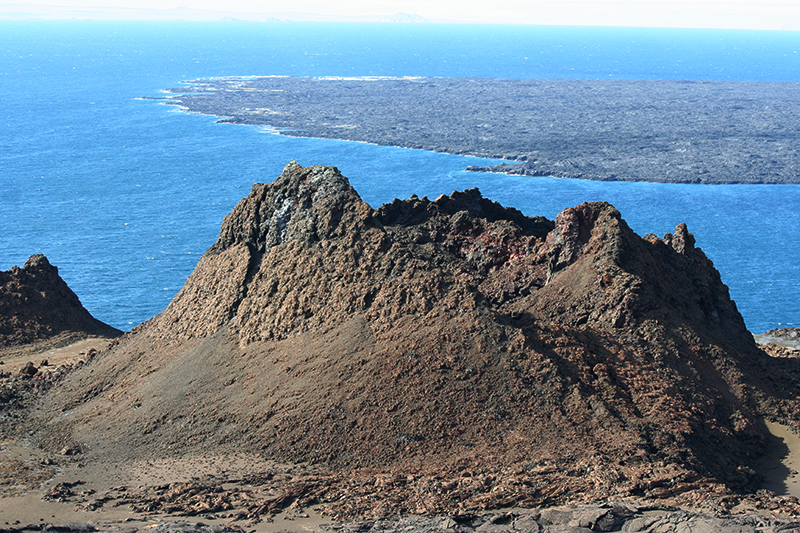 The Galapagos is a series of volcanic islands that has not been connected with the continent for millions and millions of years. Almost all the wildlife, both animals and plants, over many hundreds of thousands of years have somehow migrated there and adapted themselves to the Galapagos conditions and become more and more diverse from their continental ancestors. This speciation within the archipelago was recognised by Charles Darwin when he visited the Galapagos on the Beagle in 1835 and his observations then played a substantial part in formulating his theory of evolution – popularly known as ‘The Origin of Species’.
The Galapagos is a series of volcanic islands that has not been connected with the continent for millions and millions of years. Almost all the wildlife, both animals and plants, over many hundreds of thousands of years have somehow migrated there and adapted themselves to the Galapagos conditions and become more and more diverse from their continental ancestors. This speciation within the archipelago was recognised by Charles Darwin when he visited the Galapagos on the Beagle in 1835 and his observations then played a substantial part in formulating his theory of evolution – popularly known as ‘The Origin of Species’.
Lying on the equator 970km west of the Ecuadorean coast the Galapagos consists of 6 main islands, 12 smaller islands and over 40 islets. Nowadays the islands have a population of 28,000 excluding temporary inhabitants.
On this tour we have had the opportunity to visit all the main islands and several of the smaller ones – it has been just about comprehensive. The photos are the best way to share the enormity of this place. However they can only capture a silent moment in time. This place is truly magical.
The following is our diary – just skip to the photos if you don’t wish to read the day by day account!
Sunday 13th – Isla Floreana
Couple of stops in the morning – the Post office! There is a custom, since 1793, to place unstamped letters and cards in a barrel to be delivered, free of charge, to the addresses. We thought trying to post a few birthday presents out from this point but felt that was not in the spirit!
On to Islote Champion for another snorkel
The afternoon was spent on Punta Comoran, a volcanic green beach as a consequence of olivine crystals, with a lagoon nearby that is home to flamingos. Many of them were nesting at the time of our visit. Following a session in the kayak chasing giant turtles, then a snorkel swimming with turtles and sealions, Sven managed to step on a green sea urchin lying on the beach and embed several spines in his foot. However we were able to retrieve most of them before the afternoon’s walk. I drew the line at Sven’s suggestion of sucking the remaining needles out of his foot!
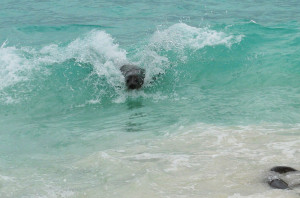 The walk took us past the flamingo lagoon, onto another white coral beach which is home to the turtle nests. The female turtles lumber their way up the beach, above the tide mark, to dig a hole in which they lay their eggs. When the females come to leave their nests, they don’t return, until the next brood are on the way. Consequently the babies are left to flounder their way down to the sea, alone, blind and completely exposed to predators. On land these are primarily to the crabs, birds, rice rats and iguanas. In the sea the predators are the sea lions and sharks. It’s a wonder any of them survive at all. The beach itself was lovely and riding the surf were sting-rays, turtles, sea lions and sharks – all having a ball!
The walk took us past the flamingo lagoon, onto another white coral beach which is home to the turtle nests. The female turtles lumber their way up the beach, above the tide mark, to dig a hole in which they lay their eggs. When the females come to leave their nests, they don’t return, until the next brood are on the way. Consequently the babies are left to flounder their way down to the sea, alone, blind and completely exposed to predators. On land these are primarily to the crabs, birds, rice rats and iguanas. In the sea the predators are the sea lions and sharks. It’s a wonder any of them survive at all. The beach itself was lovely and riding the surf were sting-rays, turtles, sea lions and sharks – all having a ball!
After dinner, we strolled to the stern of our boat and watched Galapagos sharks swimming slowly around the light looking for food. Sharks are such graceful animals as they glide easily through the water that it is a shame they are dangerous to man.
Monday 14th morning – Isla Isabela
This is the largest of the islands in the archipelago formed by extensive lava flows from 6 volcanoes on the island, 5 of which are still active. We visited 2 sites with different lava flow formations. Punta Moreno on the southwest point starts with a dingy ride to a dry landing point. The walk took us over extensive ‘a-a’ (pronounced ah-ah, a geological term) lava flows that have flowed from Volcano Chico. Some of the lava flows have created lava tubes which are not visible from the surface except where the tube has collapsed due to the weight of its ceiling. The surface lends to the growth of pioneer plants such as cactus and also the development of lagoons that have been created from cracks and crevices in the lava that sea water enters. Even in this highly saline water, flamingos, yellow tail mullet fish and Gallinule birds survive.
After lunch, while taking a lazy promenade along the deck, we saw several eagle rays and some sting rays leaping clean out of the sea. They must get between one and two metres into the air before splashing down. We also had dolphin swimming and jumping out of the water. One made the biggest leap we have ever seen, seemingly hanging in the air for ages, before turning on its back and breaking the water with an enormous splash.
Monday 14th afternoon – Isla Fernandina
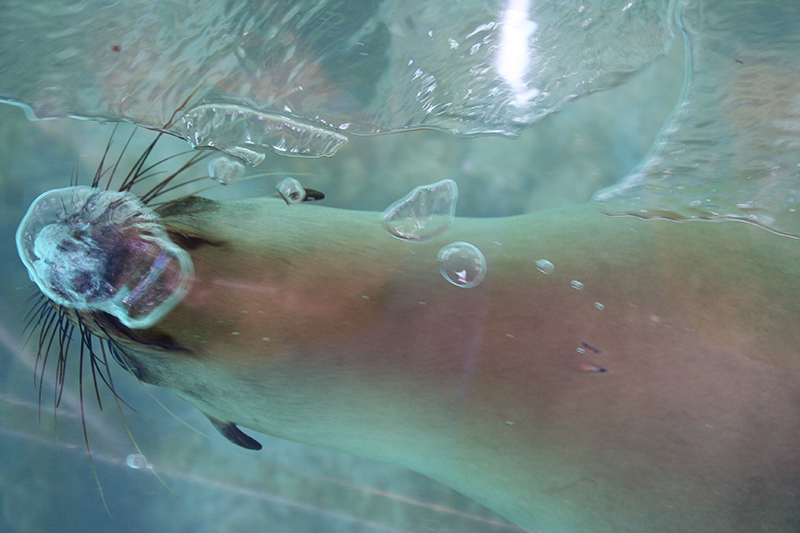 The boat travelled up the Isla Isabela through a channel that is home to the whales. We were fortunate to get a few sightings but unfortunately not deft enough with the camera to get the ‘kodak’ picture of the whale and its tail as it dives. Our passageway was to Isla Fernandina which is isle the most western one in the Galapagos archipelago. It is also the youngest of the islands, about 700,000 years old and the most active volcanically. Being the most western it is also the coldest water in the area so an offer to snorkel was politely declined in favour of the glass bottom boat. From the dryness of the boat we were able to encounter a playful sea lion and a ‘Charles’ mockingbird of which there are only 100 left and only found on this island.
The boat travelled up the Isla Isabela through a channel that is home to the whales. We were fortunate to get a few sightings but unfortunately not deft enough with the camera to get the ‘kodak’ picture of the whale and its tail as it dives. Our passageway was to Isla Fernandina which is isle the most western one in the Galapagos archipelago. It is also the youngest of the islands, about 700,000 years old and the most active volcanically. Being the most western it is also the coldest water in the area so an offer to snorkel was politely declined in favour of the glass bottom boat. From the dryness of the boat we were able to encounter a playful sea lion and a ‘Charles’ mockingbird of which there are only 100 left and only found on this island.
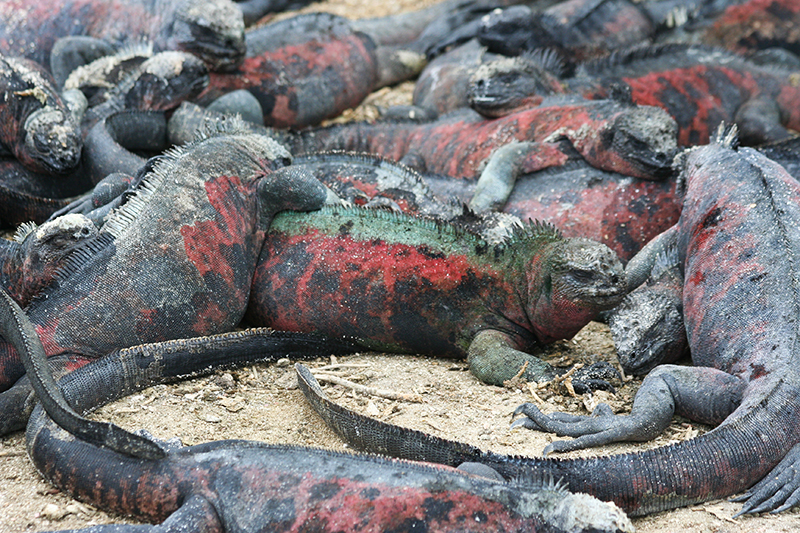 Our anchorage point was at Punta Espinaza for another dry water landing onto ‘pahoe-hoe’ lava flow. A trail goes up through sandy nesting areas for huge colonies of marine iguanas. The island also has large numbers of flightless cormorants, turtles and, of course, more sea lions.
Our anchorage point was at Punta Espinaza for another dry water landing onto ‘pahoe-hoe’ lava flow. A trail goes up through sandy nesting areas for huge colonies of marine iguanas. The island also has large numbers of flightless cormorants, turtles and, of course, more sea lions.
On Monday evening we crossed the Equator twice.
Tuesday 15th – Isla Santa Cruz
Santa Cruz is the most central of the Galapagos Islands and the main town is Puerto Ayora. We spent the morning visiting the highlands and the afternoon back down on the coast at the Charles Darwin Research Station. The interior of the islands has a number of attractions most notably the giant tortoises.
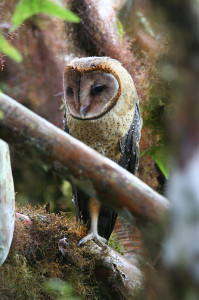 The weather in the highlands was typical for this time of year. It is the cool season, known as garua (mist, drizzle) the skies are generally overcast, it is very windy and the highlands were wet with drizzle. So, armed dry tops and sturdy boots, we first went to Los Gemelos (the twins), a pair of sinkholes, formed by the collapse of the ground above a fault. It was a good place to find a barn owl but we didn’t see the hawks we expected to find. In the same area were several giant lava tubes (natural volcanic tunnels) that had formed very large cavernous underground tunnels in which we could walk. The one we were in was found by a local farmer who had lost a cow. After several days he passed an area that smelt of dead cow and by rummaging through the undergrowth had come across the large opening into which the cow had fallen. The lava tube is so significant it takes 30minutes to walk through it.
The weather in the highlands was typical for this time of year. It is the cool season, known as garua (mist, drizzle) the skies are generally overcast, it is very windy and the highlands were wet with drizzle. So, armed dry tops and sturdy boots, we first went to Los Gemelos (the twins), a pair of sinkholes, formed by the collapse of the ground above a fault. It was a good place to find a barn owl but we didn’t see the hawks we expected to find. In the same area were several giant lava tubes (natural volcanic tunnels) that had formed very large cavernous underground tunnels in which we could walk. The one we were in was found by a local farmer who had lost a cow. After several days he passed an area that smelt of dead cow and by rummaging through the undergrowth had come across the large opening into which the cow had fallen. The lava tube is so significant it takes 30minutes to walk through it.
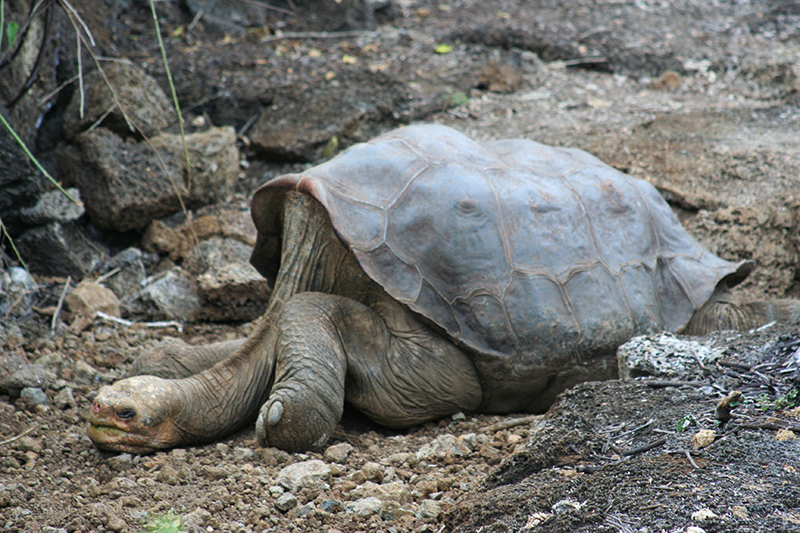 The highlight of the hills was the giant tortoises that live and roam (slowly) in the wild. These huge beasts that weigh up to 300Kgs drag themselves around the hills leaving flattened vegetation to mark their path. Fortunately, their hearing is very poor so it is possible to creep up behind them, grandmother footsteps style, and get close. Their eyesight on the other hand is excellent and if you get ‘spotted’ they draw in the long necks and front legs by expelling air from their lungs (in a huge hiss).
The highlight of the hills was the giant tortoises that live and roam (slowly) in the wild. These huge beasts that weigh up to 300Kgs drag themselves around the hills leaving flattened vegetation to mark their path. Fortunately, their hearing is very poor so it is possible to creep up behind them, grandmother footsteps style, and get close. Their eyesight on the other hand is excellent and if you get ‘spotted’ they draw in the long necks and front legs by expelling air from their lungs (in a huge hiss).
The Charles Darwin Research Station houses the famous Lonesome George, the last surviving giant tortoise from La Pinta Island, and tortoise breeding programme. Lonesome is about 100 years old and he has been brought into captivity both for his own protection and in the hope that he will breed with the other saddle back females so that his descendants can be re-introduced to the island. He has two very attractive looking females in his enclosure but they have not engaged in the activities necessary to produce babies. We wonder whether George needs some medical intervention (tortoise Viagra) or whether his two companions require headache pills.
Elsewhere, there is a large breeding programme that was begun by importing a giant male tortoise from San Diego Zoo. Diego, as he is known, has been very successful with the girls and has been responsible to fathering thousands of babies. Clearly George can learn a thing or two from Diego. The baby tortoises, all of whom are numbered, are released into the wild when they reach 5 years old.
Wednesday 16th morning – Isla Bartolome
A small island in Sullivan Bay off the eastern shore of Isla Santiago. It’s probably the most visited and most photographed of all the islands with its distinctive Pinnacle Rock and fantastic views of the most recent lava flow following the eruption of late 1890’s. Another pre-breakfast hike on a trail that leads to the summit was well worth the early start. We were welcomed by sunshine for the first time in the week and the views across to Santa Cruz, the Daphnes and Islas Baltra, Santiago and Isabela, were lovely – lots of photos were taken of the group and the guides.
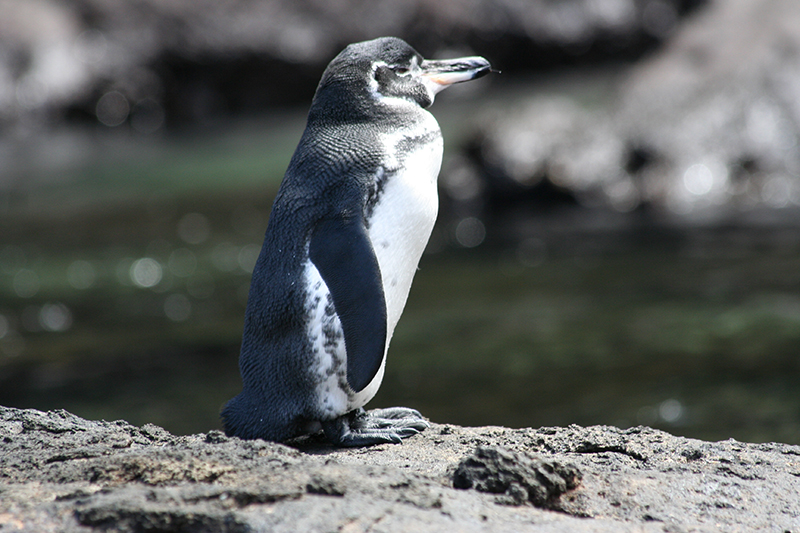 Post breakfast was a fantastic snorkel from the beach and around Pinnacle Rock – with penguins, a white tipped Reef Shark and plenty of sea lions again. The waters were warm which makes the environment even more unusual for penguins who will swim close to you, swiftly moving in and around. Sven and one (mad) penguin swam cheek to cheek through the shallow water, two oddballs together!
Post breakfast was a fantastic snorkel from the beach and around Pinnacle Rock – with penguins, a white tipped Reef Shark and plenty of sea lions again. The waters were warm which makes the environment even more unusual for penguins who will swim close to you, swiftly moving in and around. Sven and one (mad) penguin swam cheek to cheek through the shallow water, two oddballs together!
Wednesday 16th afternoon – Isla Rabida
Rabida is just south of Santiago and has a salt water lake that used to be home to the Flamingos – now its home to the young and old male sea lions. The flamingos have left the island due to the change in ‘ph’ of the lagoon water that has been affected by the sea lions’ waste. The primary spot for the sea lions is the obviously the beach but young, old and non-alpha males get displaced by the main bull, the beach master, and have to live in the lagoon. The females and pups get the best location in terms of beach.
The afternoon walk was a brisk one as the wind was getting up and the sun settling down quickly – just enough time to see Galapagos dove, mockingbird, fly-catcher, oyster catcher and a wandering tattler – we never knew we could be so interested in birds!!
Thursday 17th – Isla Espanola
Espanola is the southernmost island of the Galapagos and our final island of the tour. Following a successful programme to remove all the feral species of dog and donkey, it is now the most pristine of islands. Gardener Bay on the northern shore is a beautiful white sandy beach with excellent swimming and snorkelling. However the thought of another morning of snorkelling caused Debbie to bail out, having had enough of damp wetsuits and feeling cold. A snorkel for Sven and a gentle walk along the beach was the perfect solution.
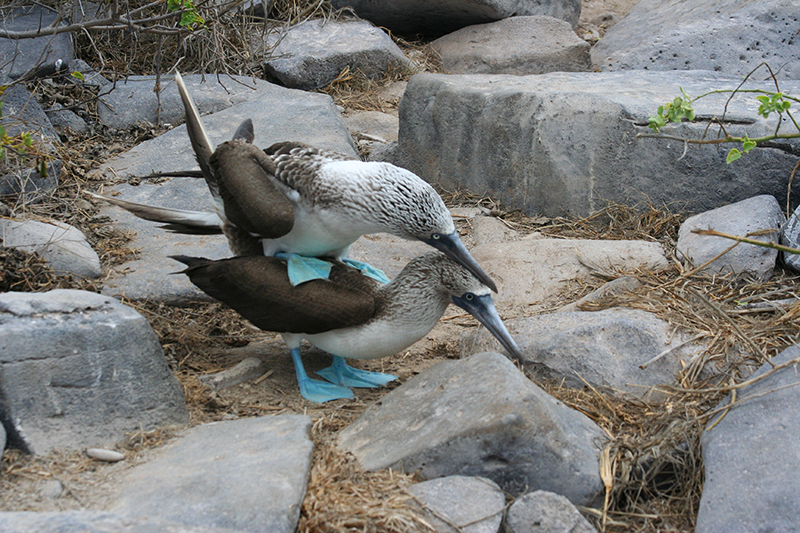 The final walk of the tour was truly memorable. We landed on, and walked over, large boulders that were once black lava. We came across lots of blue-footed boobies, now Debbie’s favourite bird. One pair were several hours into a mating dance and within several more hours of actually mating. At one point the male jumped on to the female’s back in a pathetic attempt to shorten foreplay but he was thrown off unceremoniously. She was obviously not that sort of booby!
The final walk of the tour was truly memorable. We landed on, and walked over, large boulders that were once black lava. We came across lots of blue-footed boobies, now Debbie’s favourite bird. One pair were several hours into a mating dance and within several more hours of actually mating. At one point the male jumped on to the female’s back in a pathetic attempt to shorten foreplay but he was thrown off unceremoniously. She was obviously not that sort of booby!
We came across many piles of Christmas iguanas, unique to this island. They have a red colour and, like the other sea iguanas, like to spend their time ashore in a huddle, a kind of rugby scrum, to keep warm.
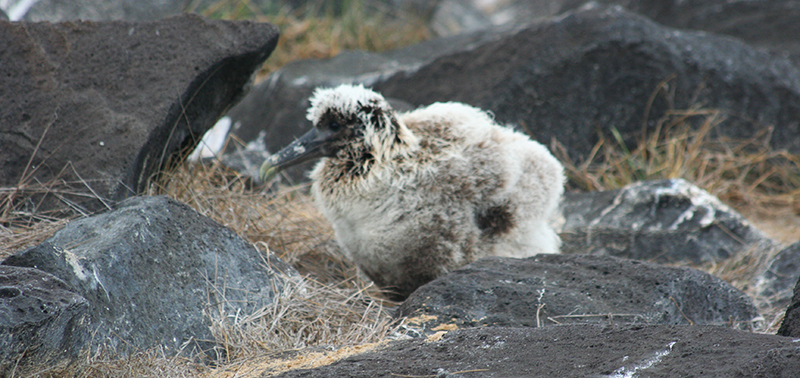 For the first time, we saw albatross. Adult birds with their brown fluffy young. The adults did not seem to have the enormous wing spans we had expected but they were still much broader than the other seabirds. The young albatross looked like they had been put into a drier on a fluffy cycle. They were big balls of brown that would have to fly away in the next two months before the trade winds disappear.
For the first time, we saw albatross. Adult birds with their brown fluffy young. The adults did not seem to have the enormous wing spans we had expected but they were still much broader than the other seabirds. The young albatross looked like they had been put into a drier on a fluffy cycle. They were big balls of brown that would have to fly away in the next two months before the trade winds disappear.
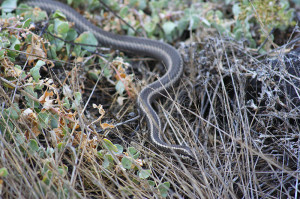 Debbie discovered the only snake spotted for many months. With a sudden expletive she jumped 10 feet in the air as the poor reptile narrowly avoided being trodden upon. It squirmed away through the low vegetation doubtless aware that as it had narrowly missed one potential danger another, from the large and dark Galapagos hawk perched nearby, also needed avoiding.
Debbie discovered the only snake spotted for many months. With a sudden expletive she jumped 10 feet in the air as the poor reptile narrowly avoided being trodden upon. It squirmed away through the low vegetation doubtless aware that as it had narrowly missed one potential danger another, from the large and dark Galapagos hawk perched nearby, also needed avoiding.
Finally, from the vantage of the clifftops, we watched a blow hole in the volcanic rocks spit long columns of sea water into the sky. The roar that the hole made as it erupted was a magnificent, deep, throaty growl. A wonderful show to complete and celebrate our final full day.
Friday 18th – San Cristobel
Departure day and a final trip into the highlands to see the ‘intermediate’ shell tortoises. These differ from the giant tortoises that have dome shell backs and the slightly smaller tortoises, like Lonesome George, called saddlebacks. The intermediate tortoises are only on San Cristobel Island and the breeding programme is aimed at re-populating the island with these majestic animals. The first babies are nearly old enough for release and it will not be long before we will be able to see intermediate tortoises in the wild again.
So we departed the Galapagos. It was a unique and wonderful experience on several levels:
First, we found ourselves with a boatful of Yankees from Stanford University. We have to say that this was a stroke of luck. As travelling companions go, they could not have been better or more welcoming. In addition, as it was an educational field trip for both students and alumni, we learnt and saw much more than we would otherwise have done. It was a pleasure to chat with the students over dinner and enjoy their enthusiasm and appetite to learn. They even listened politely while Sven explained his theory on how to reduce the rising sea levels and irrigate the deserts. If they learnt nothing else on the trip except this, they would return the richer for Sven’s words of wisdom!
The Alumni were great fun and had a depth of experience that was a pleasure to share. Professor Bill Durrant was very tolerant of our uneducated enquiries and always took time to explain the significance of what we were observing.
The Spanish speaking crew were always polite and cheerful and the Naturalists (who were part of the crew) who led our land expeditions were enthusiastic, patient and deeply knowledgeable. We had loads of laughs with them as they understood most of Sven’s jokes (or were they just being polite?).
Second, the daily programme was very aggressive (in a nice way!). Each day we are woken through the ship’s Tannoy system at whatever time has been designated the night before. This is either 6.00 or 7.00am! We are given 30 minutes to be out of our cabins before, on some days, disembarking for a walk before breakfast or, more usually (thank goodness), after breakfast. The activities then canter through the day with no more than 30 minutes grace between the finish of one and the start of another. We know exactly how the re-education programmes must have felt like in the old Soviet Union! However, the benefit of all this was that we made the most of every minute in this magical place.
Third, we were not quite sure exactly what we expected from the week before we began but it exceeded whatever expectations we might have had. The Galapagos is a truly wondrous place. Every island had something different and unique to offer despite them being adjacent to one another and, in most cases, within a mile or two of each other. It is this diversity that struck Darwin and enabled him to formulate his theory on the Origin of Species. It has been a pleasure and a privilege to follow his footsteps. Worryingly, Sven is beginning to formulate a new theory on the development of Man.

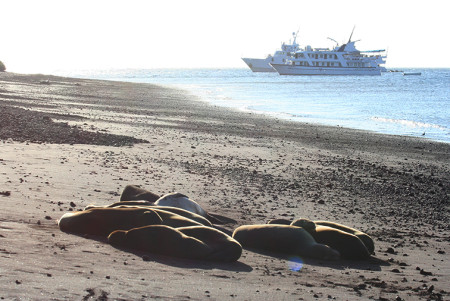
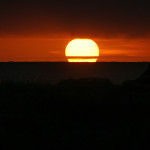
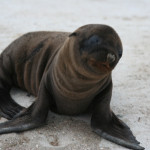
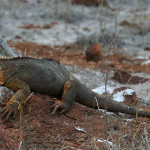
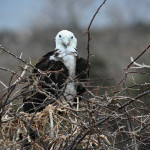
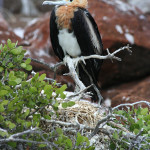
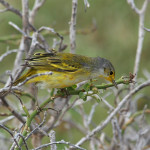
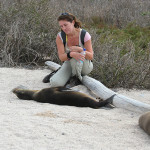
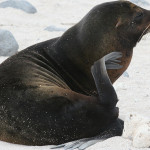
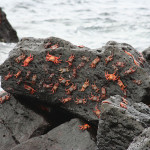
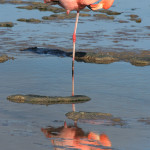
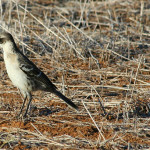
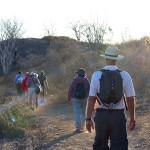
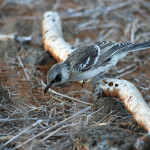
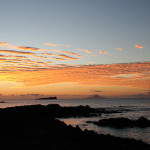
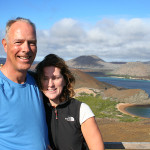
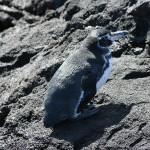
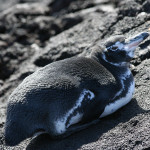
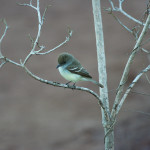
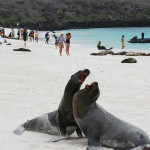
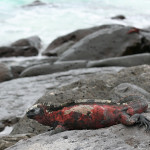
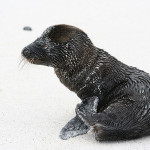
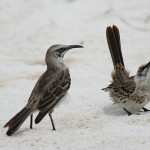
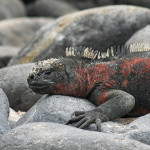
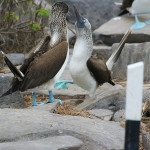
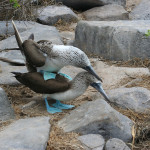
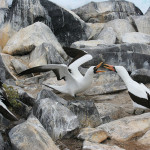
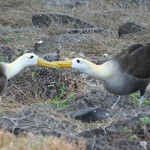
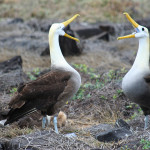
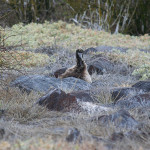
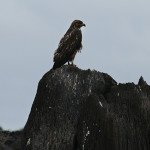
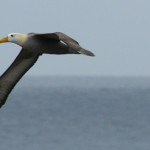
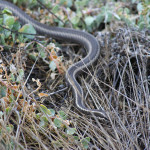
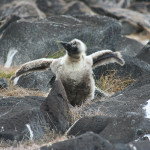
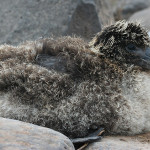
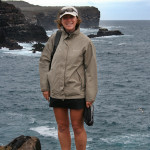
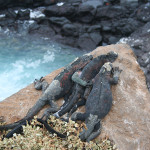
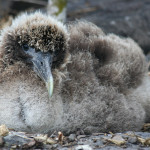
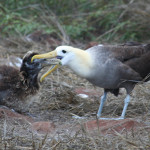
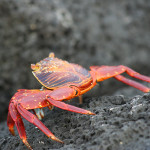
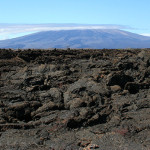
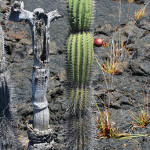
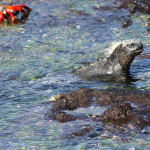
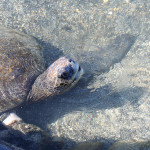
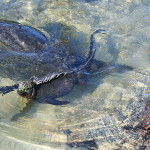
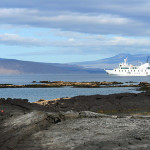
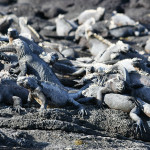
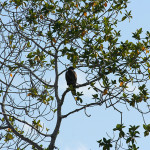
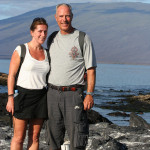
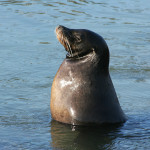
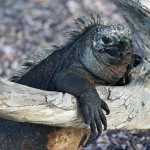
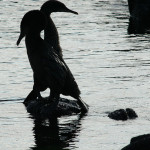
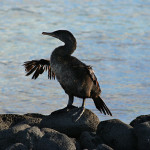
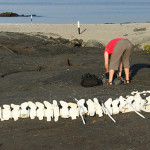
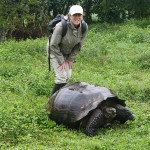
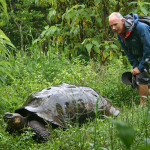
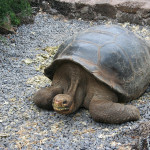
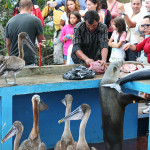
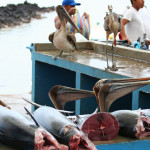
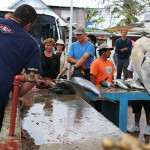
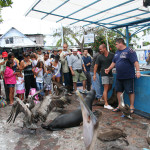
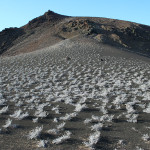
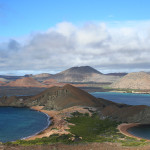
No comments yet.